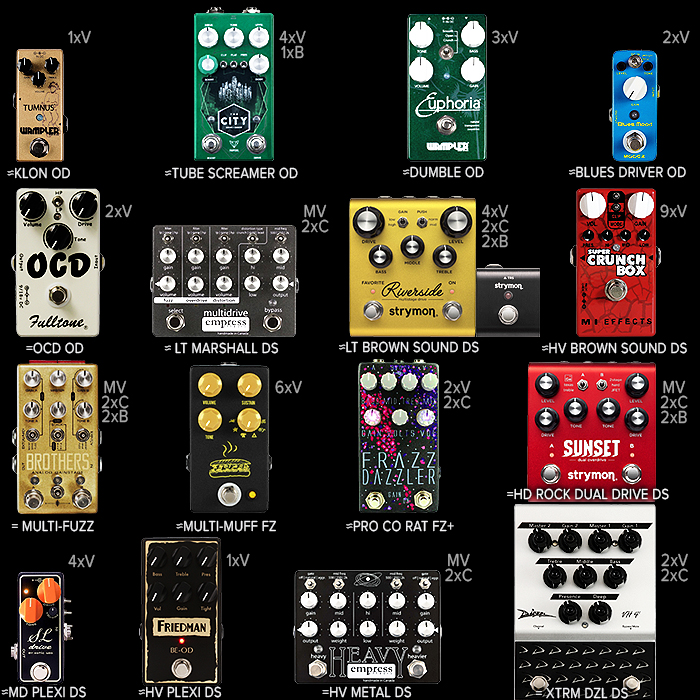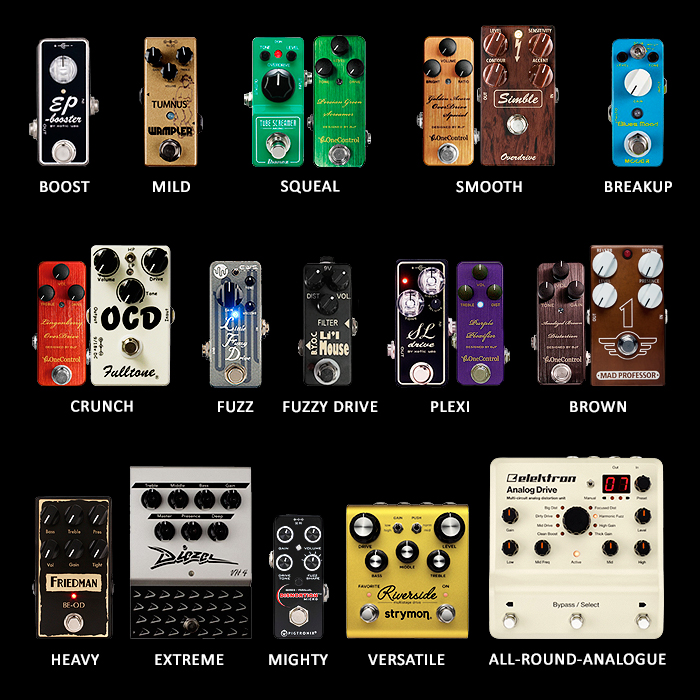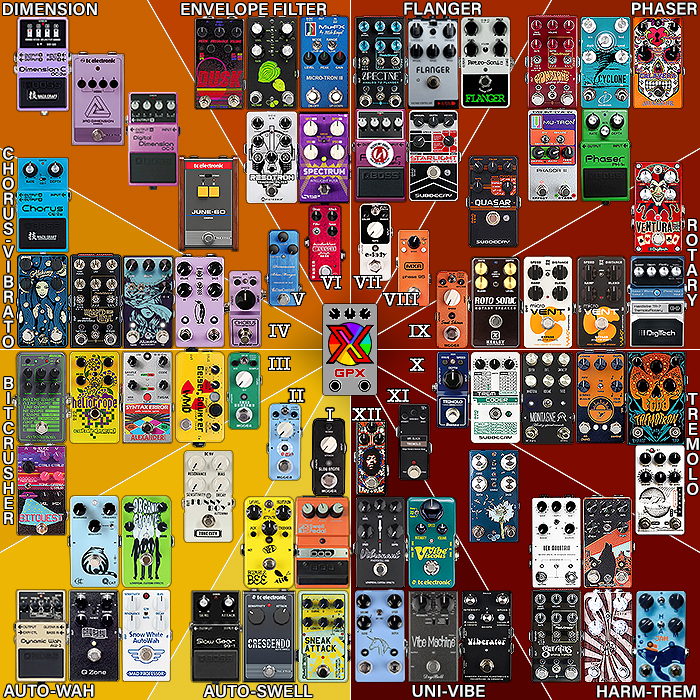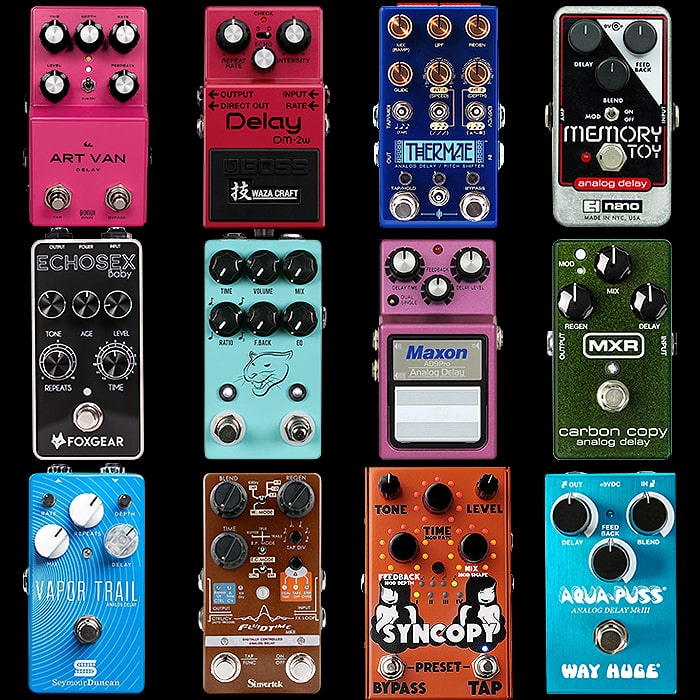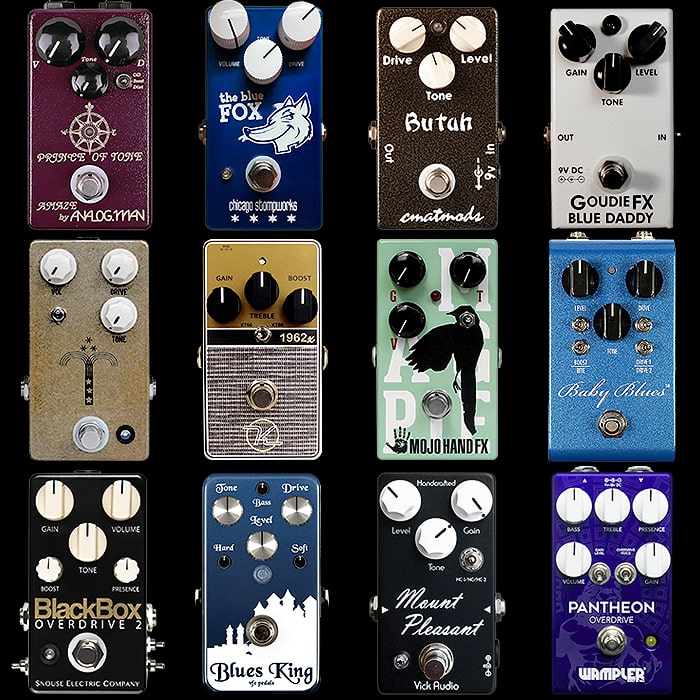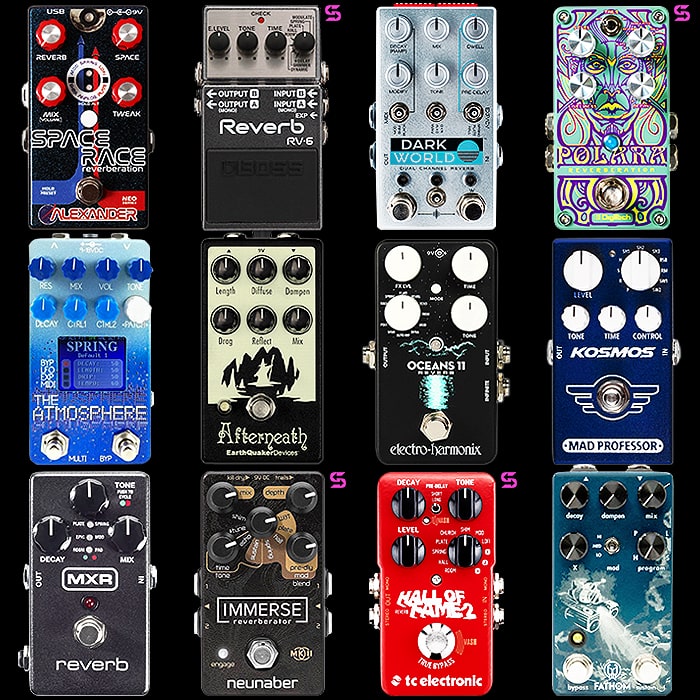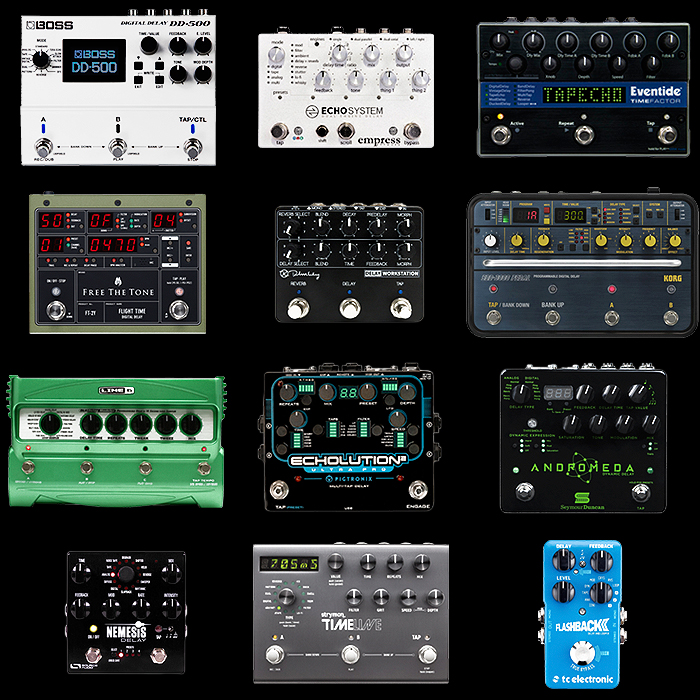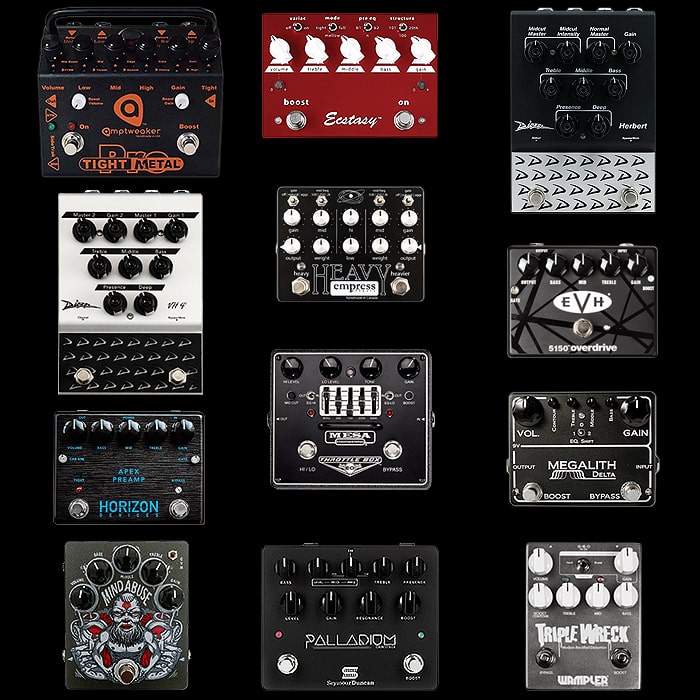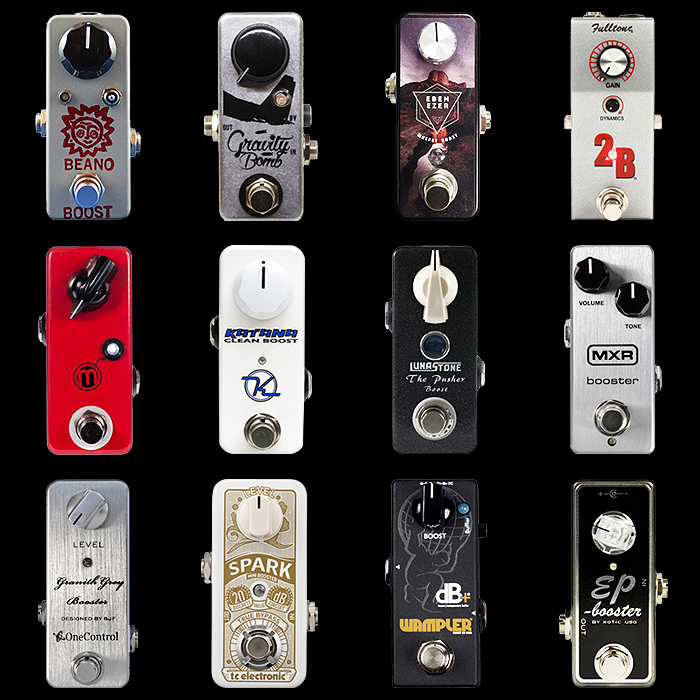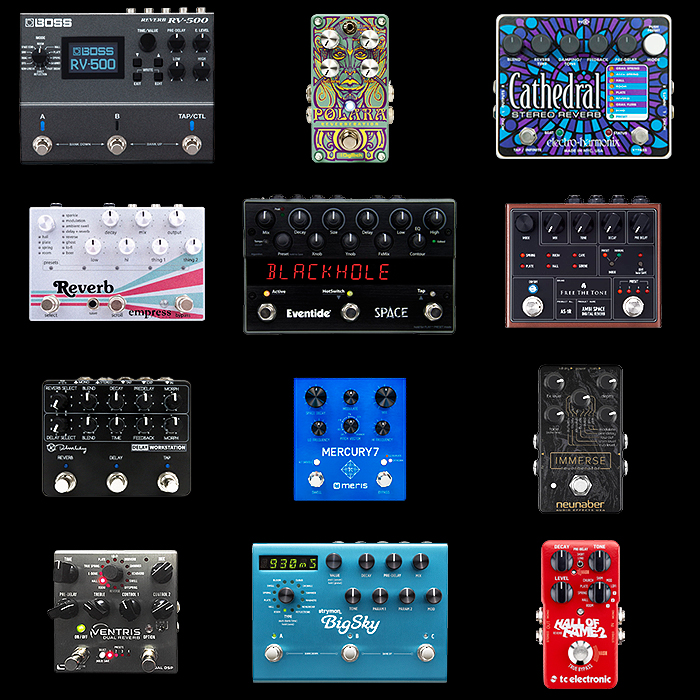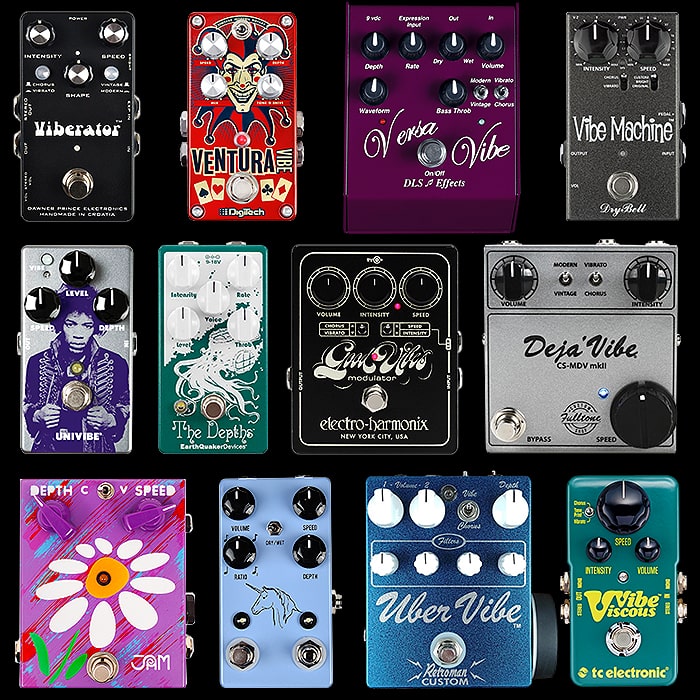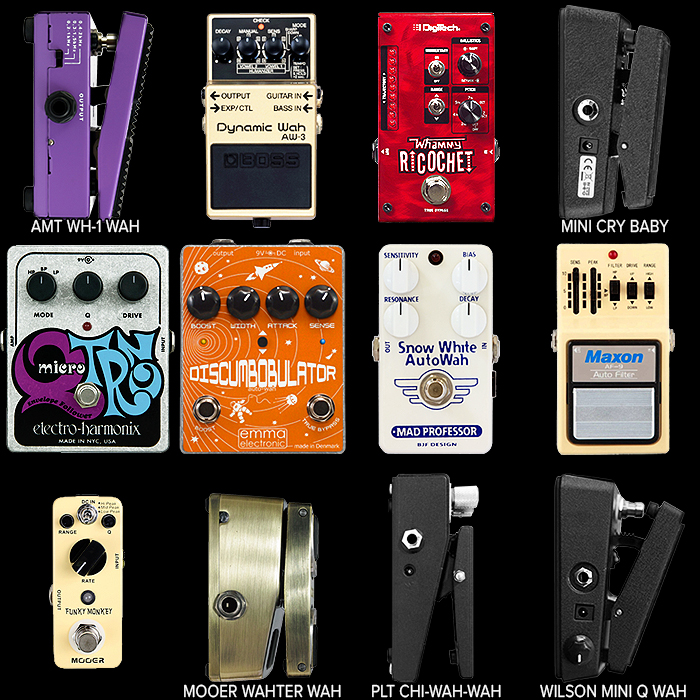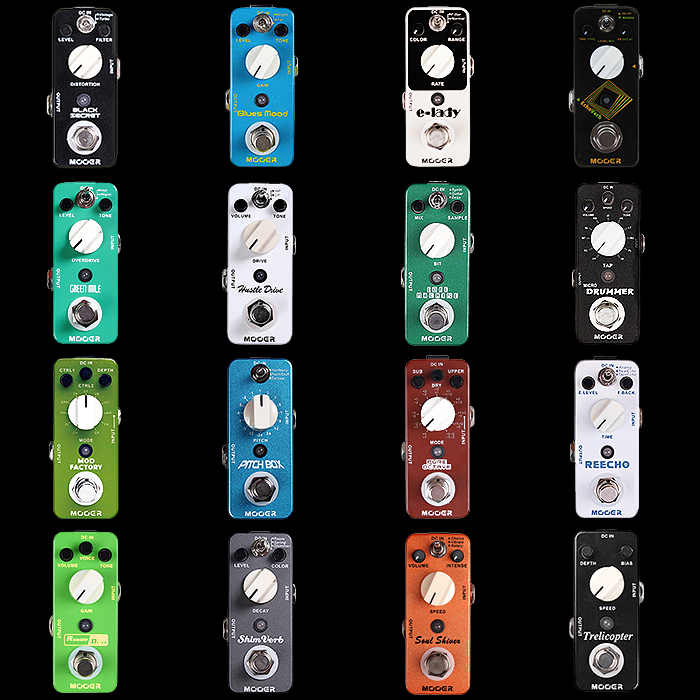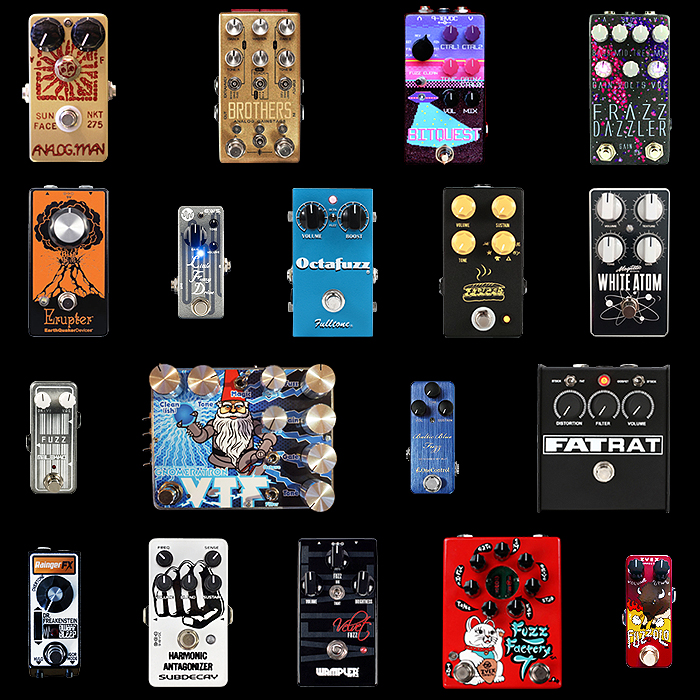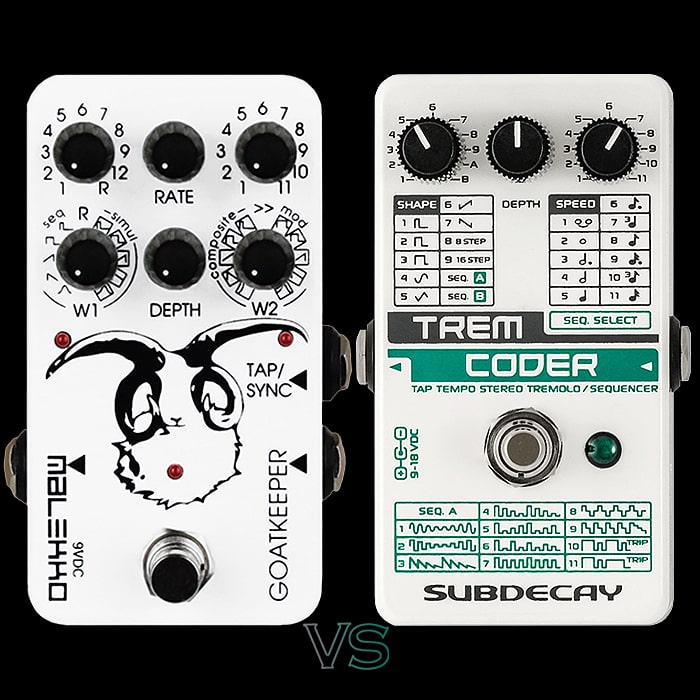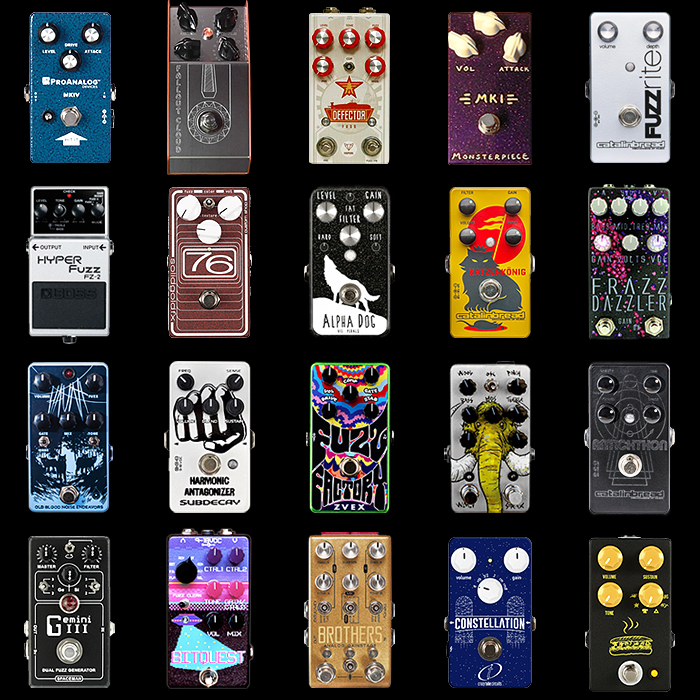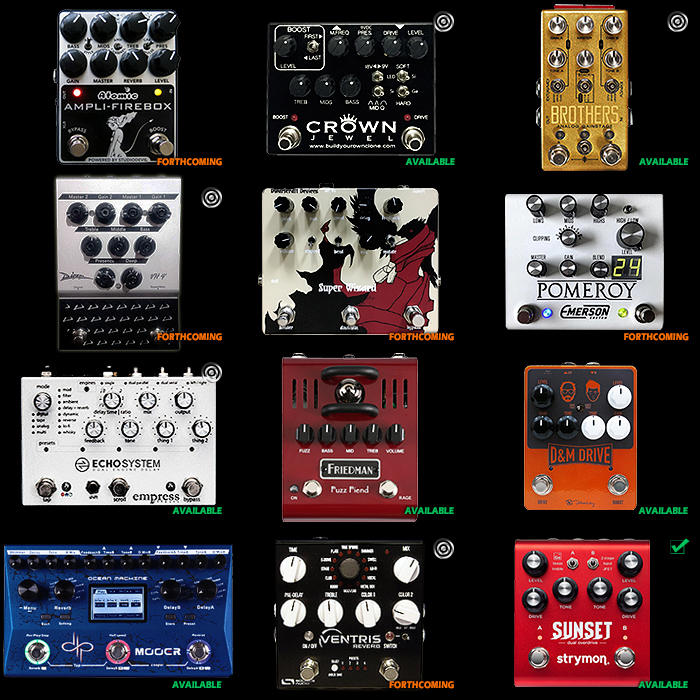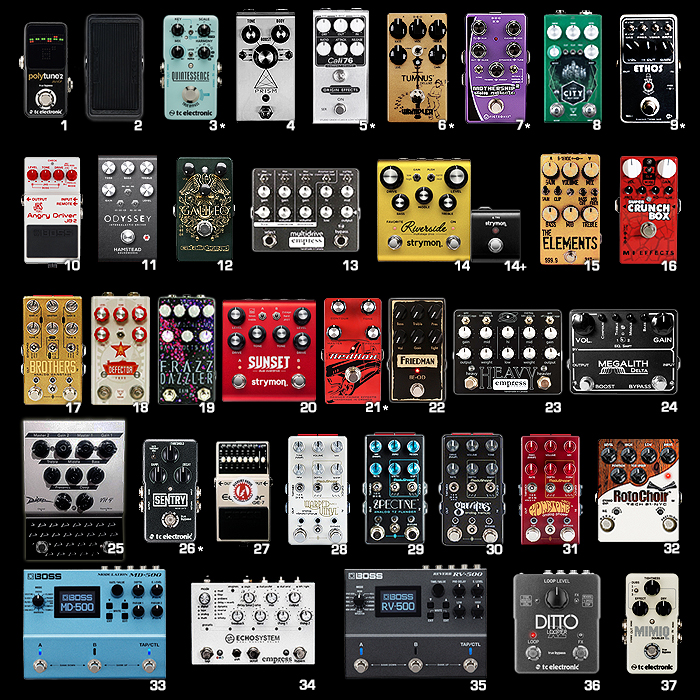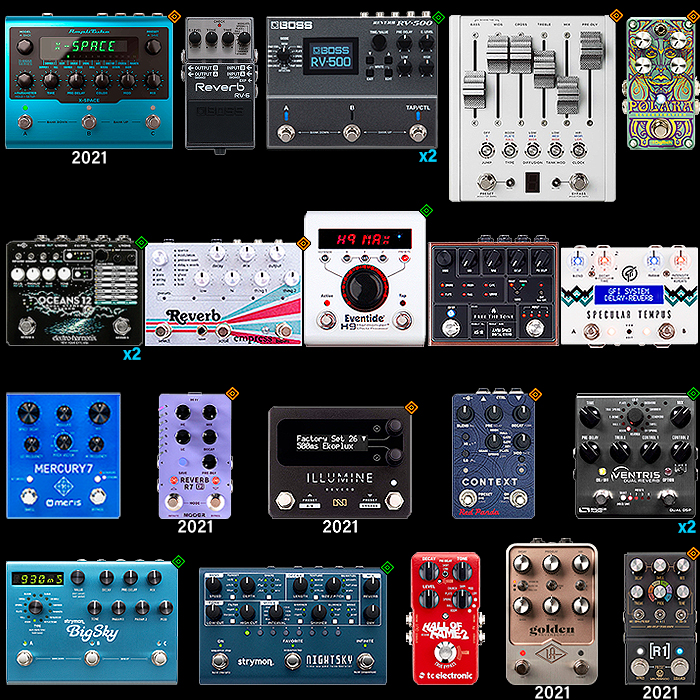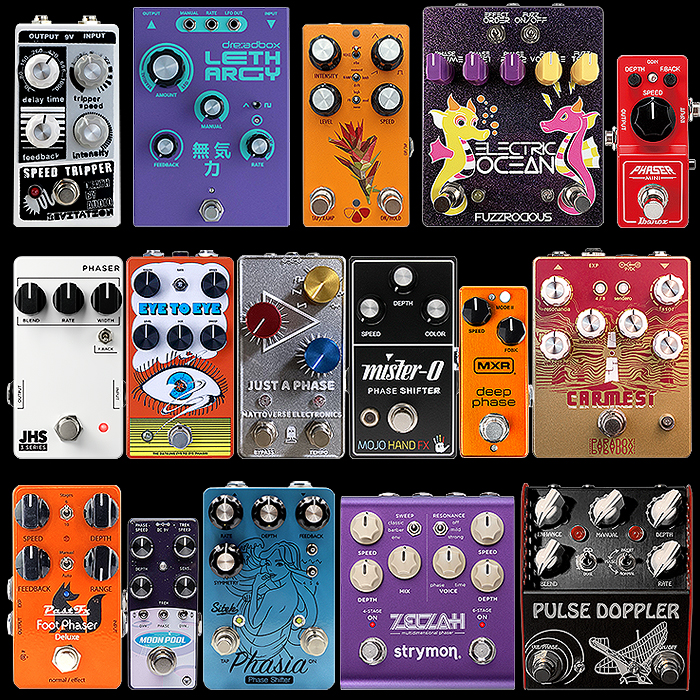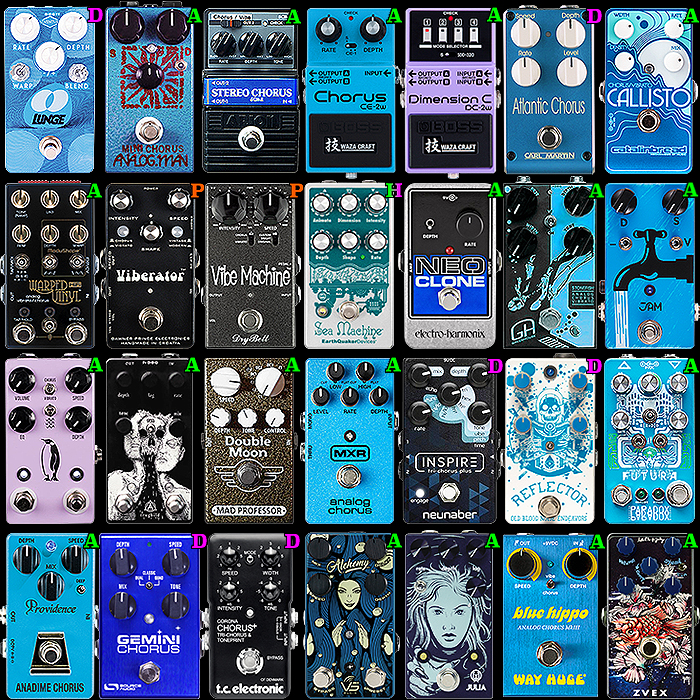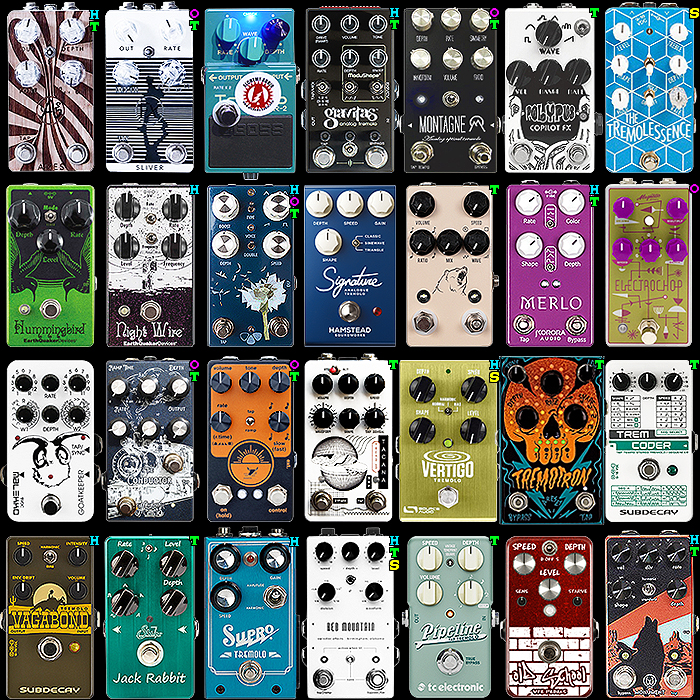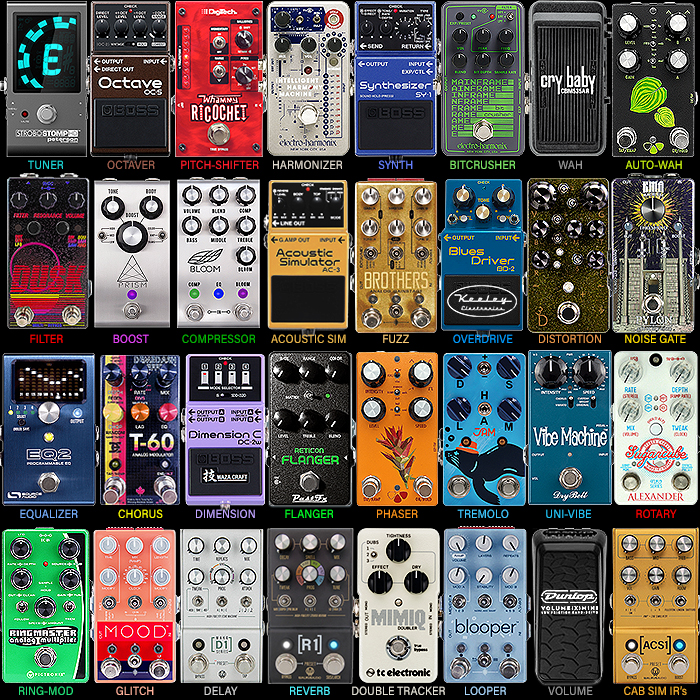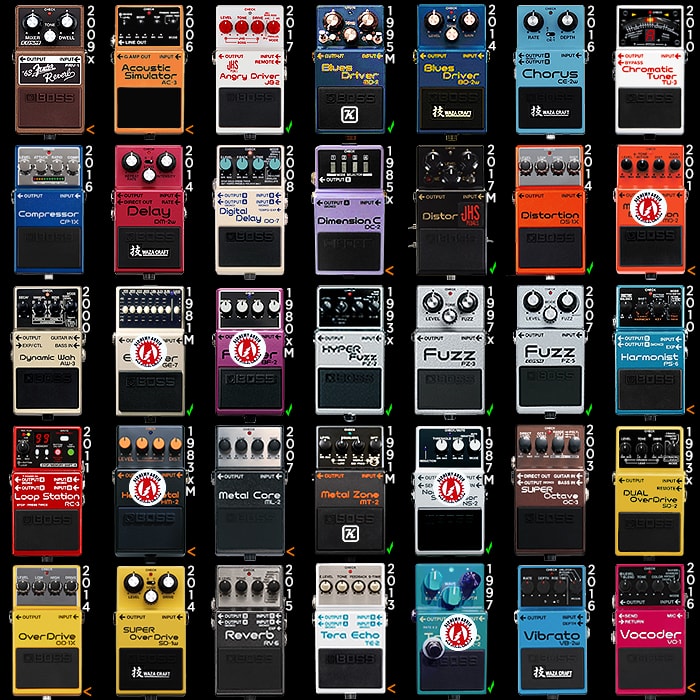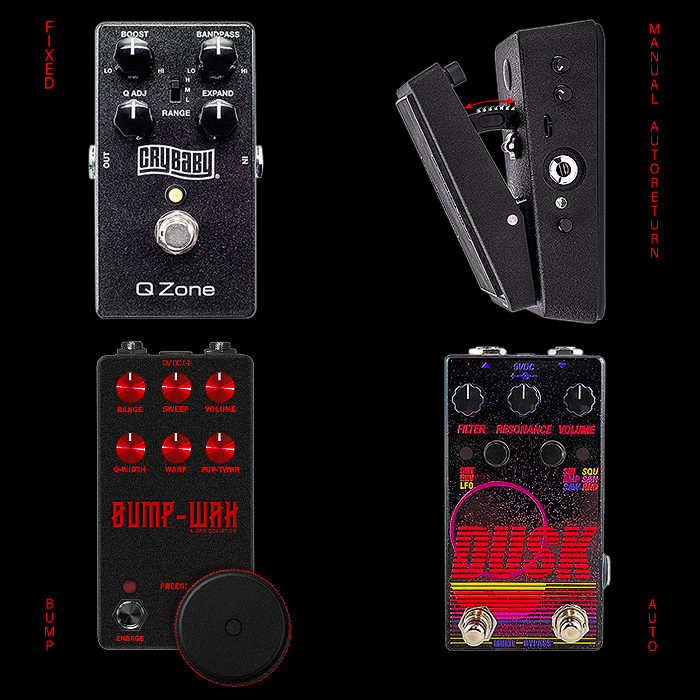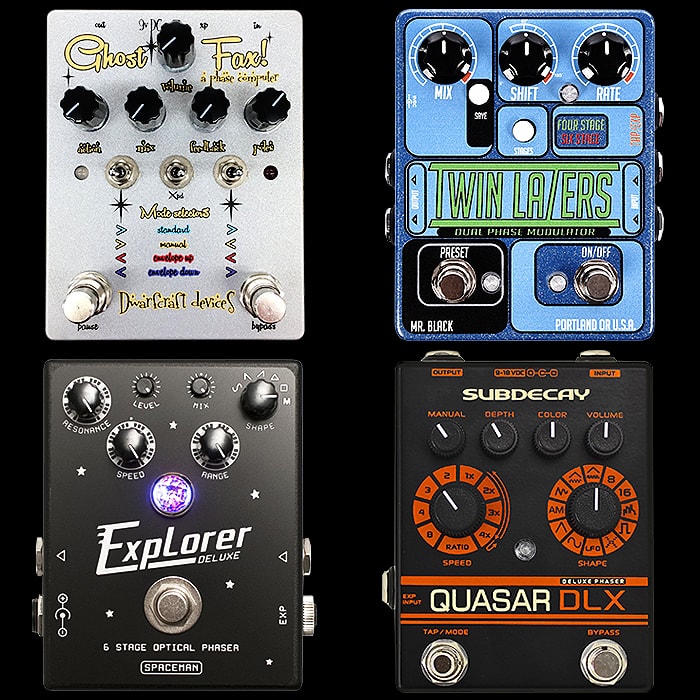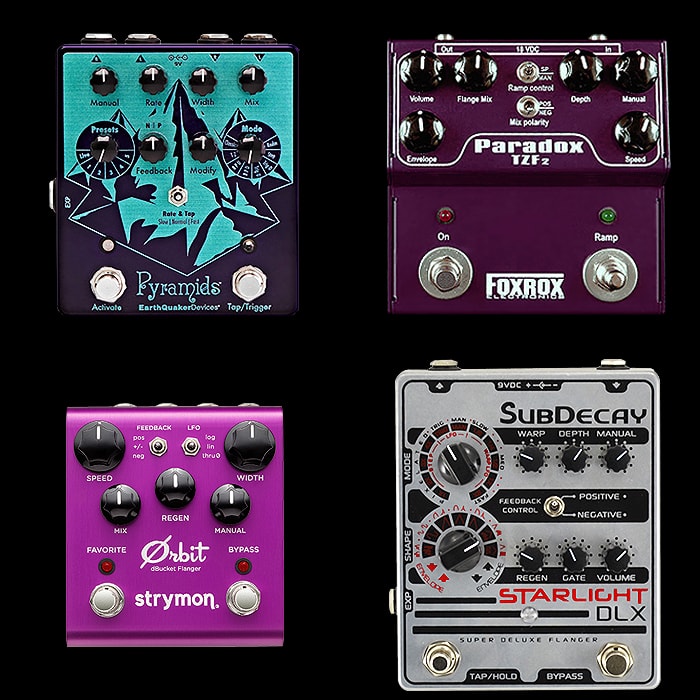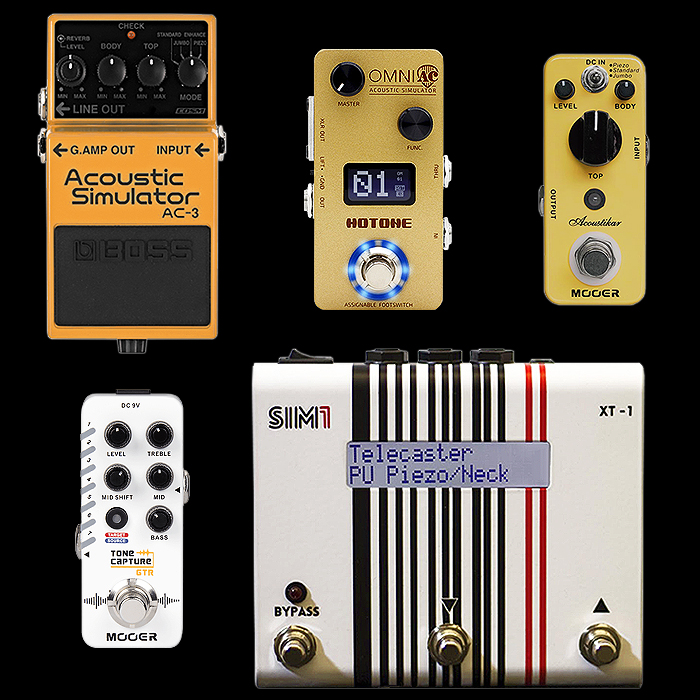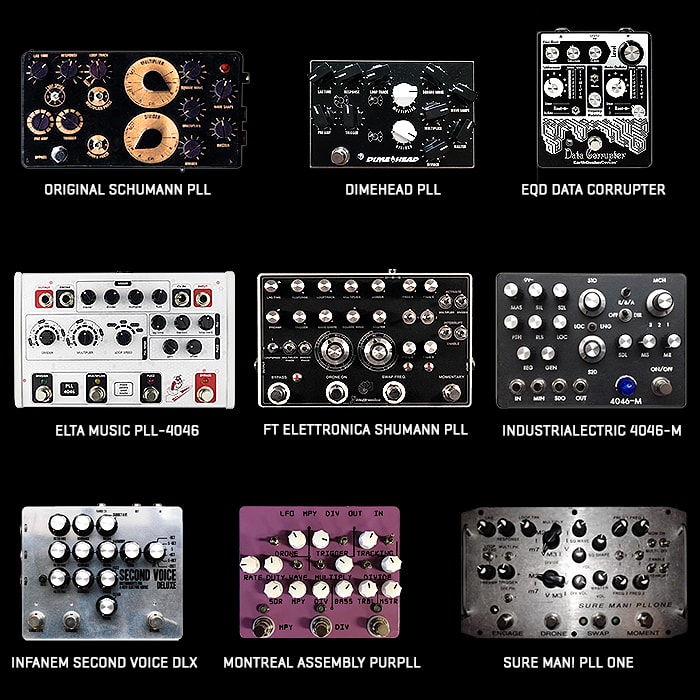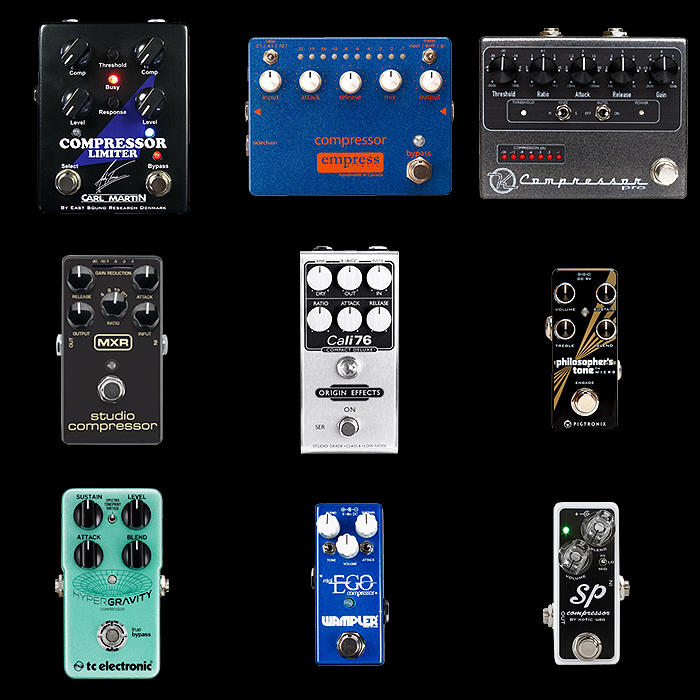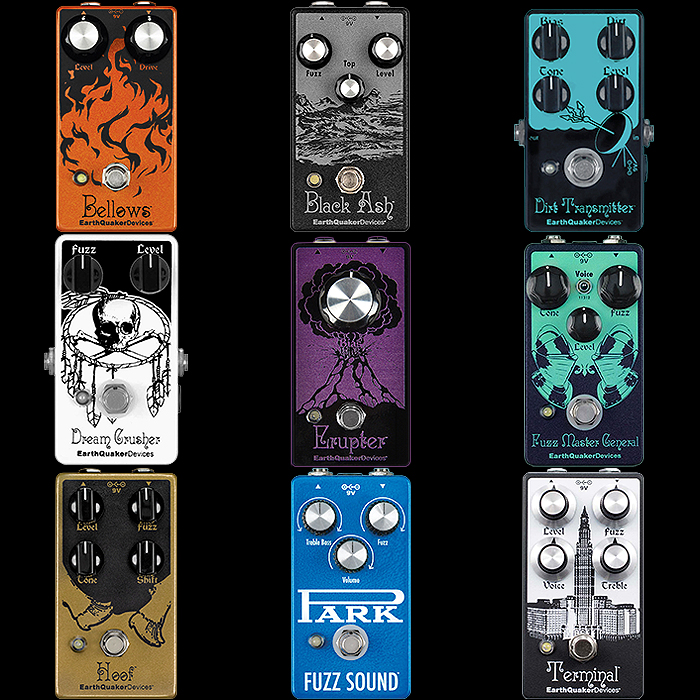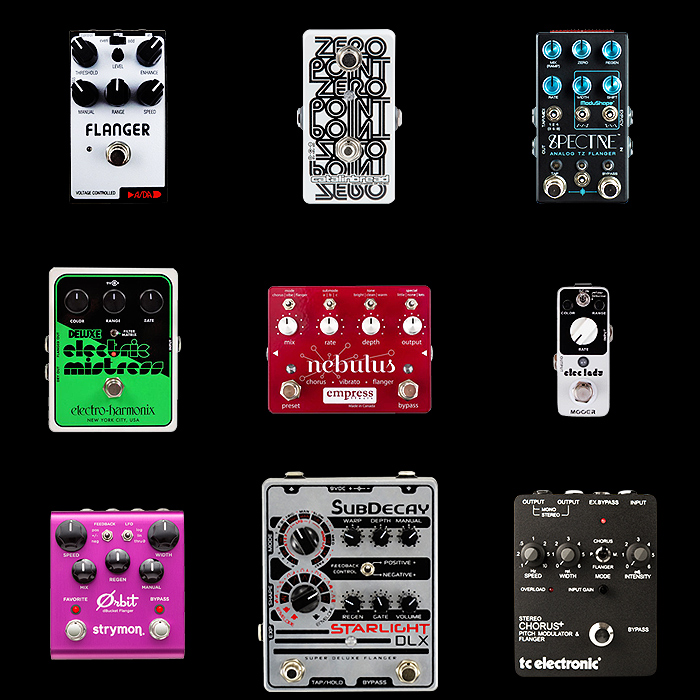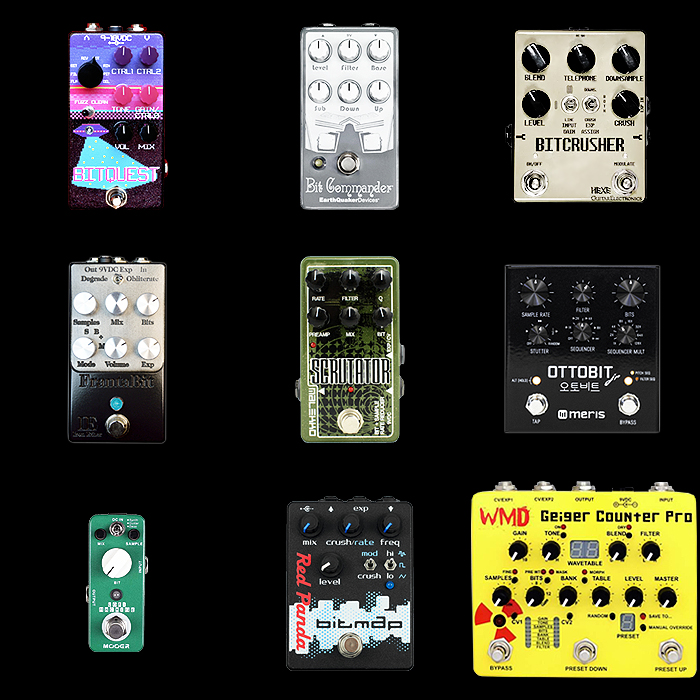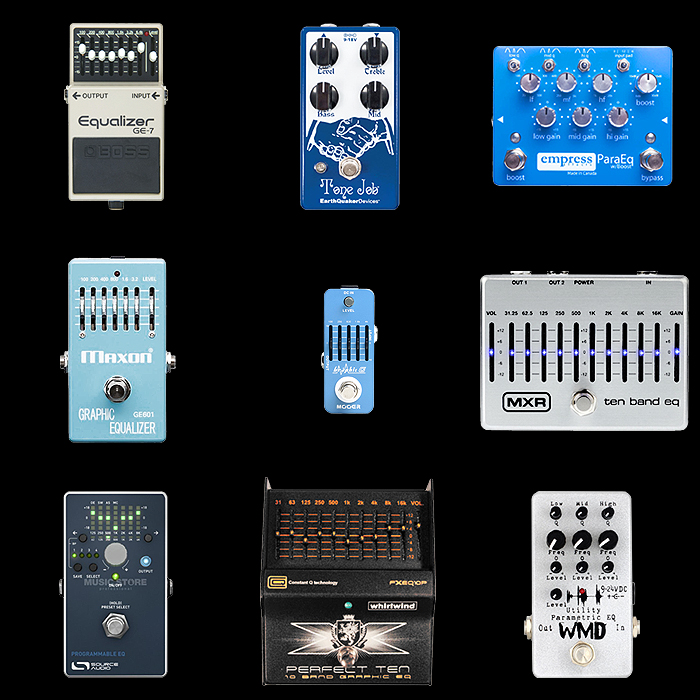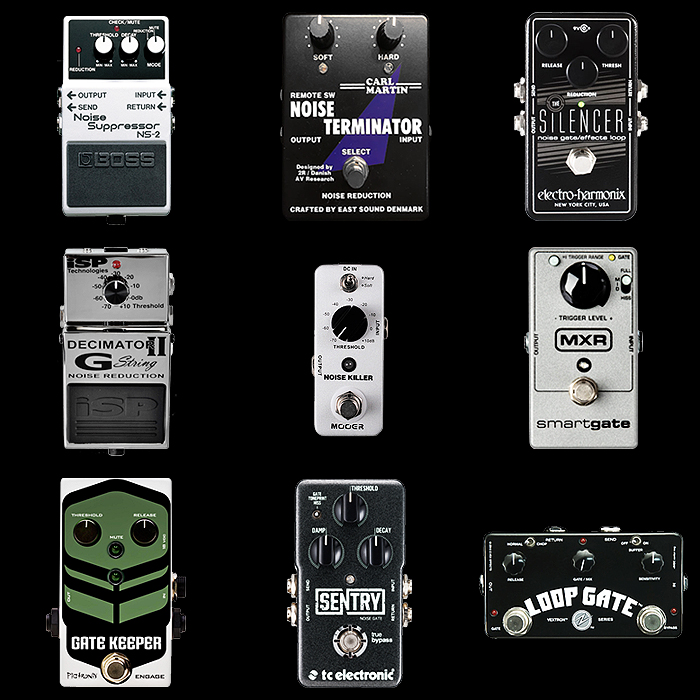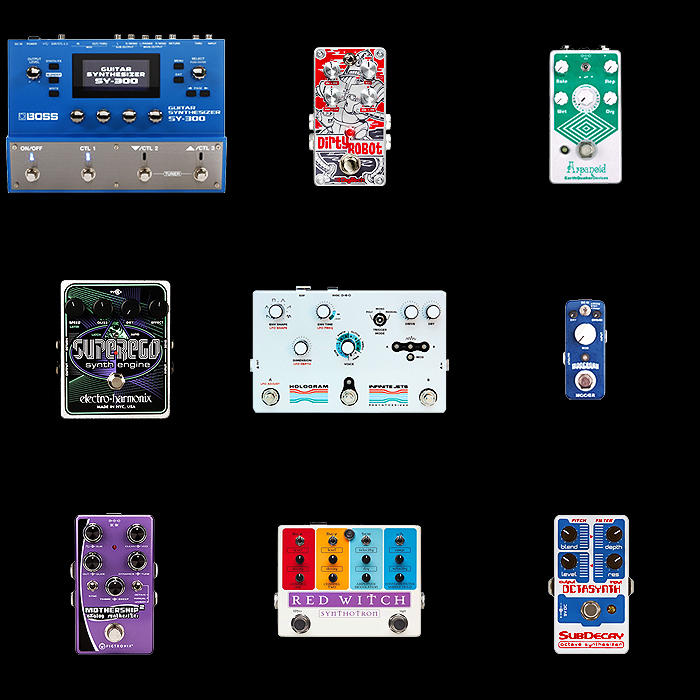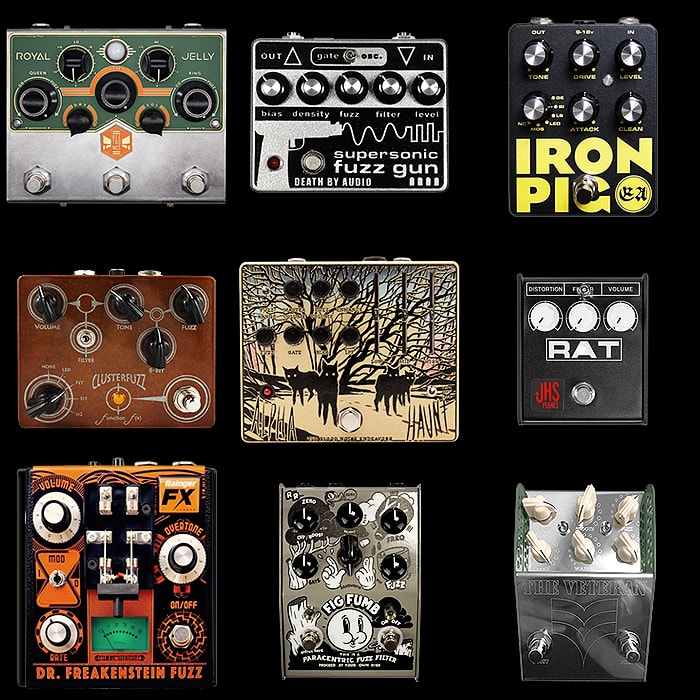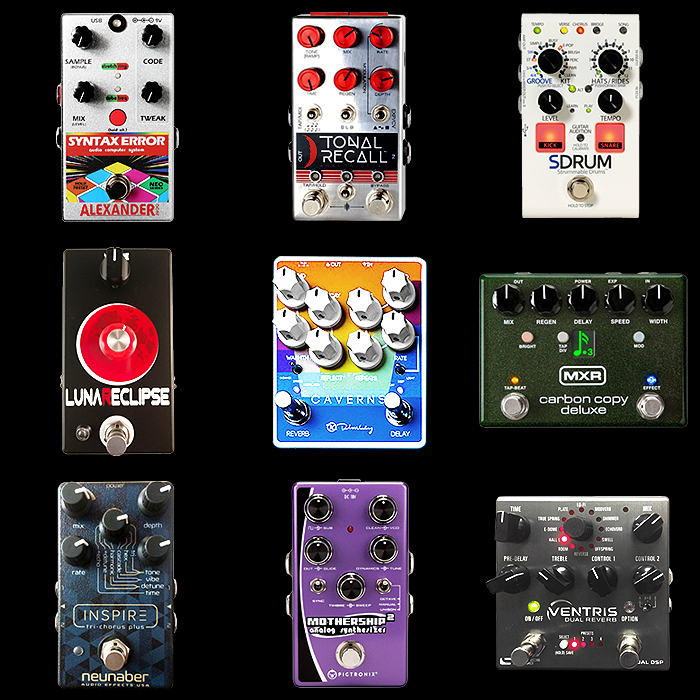20 Key Guitar Effects Pedal Types - Preferred Large Pedal per Type
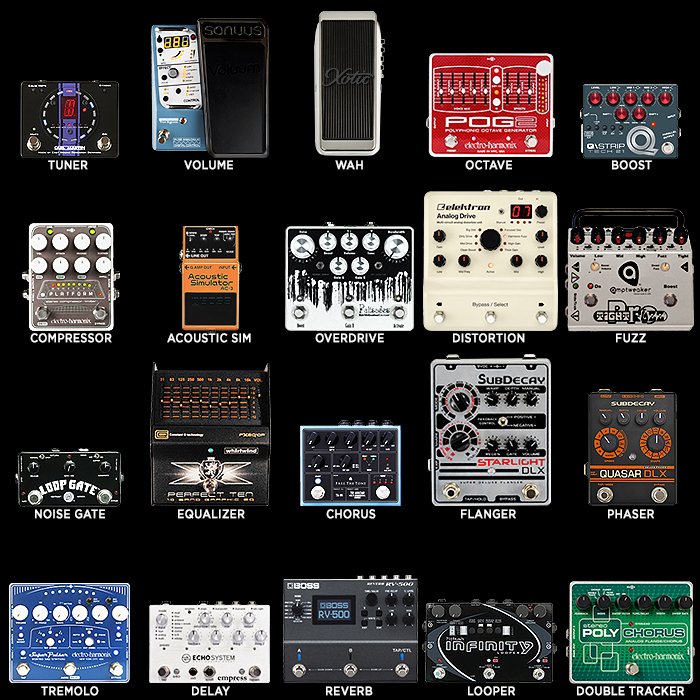
This article completes the fourth part of the quadrilogy which started with the compact pedal overview and was triggered by the 40th anniversary Boss article. If you’re going to go with a large enclosure pedal, you really need it to be of the all-singing and dancing variety, otherwise why would you be sacrificing so much pedal real estate. Traditionally large pedals have meant the big all-in-one workstations - i.e. your classic big box Eventide and Strymon, and now Boss solutions. Technology continues to advance at a fair pace, and exactly how much you can cram into smaller pedal enclosures is quite the marvel nowadays. In buying a larger pedal you are usually trying to cover off a number of functions to simplify your overall pedalboard or give you more power and versatility, and a greater feature set than you could find elsewhere.
In my current pedal chain I feature 4 large pedals - the Diezel VH4 - which makes more sense in its MKII 2 Channel variation at this size, and big box workstations for Modulation, Delay and Reverb - respectively Boss MD-500, Empress EchoSystem and Boss RV-500. I also used to have the enormous Elektron Analog Drive - drive workstation pedal in my chain, but that is now relegated to reserve for reasons I will share later.
Generally with Large pedals you are going for all-in-one solutions for a particular pedal category as in our overview. I still think their is a holy grail pedal for ovedrive | distortion | fuzz still to be built - it needs to have several circuits and clipping options, and defnitely needs presets. The Elektron Analog Drive kind of got close, but not quite close enough - it is often a question too of how much importance you place on each type and how wide a scope of tone sculpting you wish to have at your disposal - say in choosing to go with an EQD Pallisades or Amptweaker Tigh Fuzz Pro.
Some of the larger pedals most definitely validate their increased dimensions while other are just lazy, deliberately obtuse or older-style engineering. I never really understood the need for some of those Volume and Wah pedals to be near enough the size of skateboards for instance - and there still seems to be a roaring trade in old-fashioned over-sized 70’s style enclosures on pedals like Tonebenders etc. As a modernist - I want things to be as smart and compact as is practical and possible.
As with the medium enclosure size there may not always be workable alternatives for every type - I’m not just going to suggest a larger pedal because of its increased dimensions - I will recommend a large pedal where it genuinely offers more or something significantly different to pedals of more compact size. For journeying and jobbing musicians, portability is obviously a key concern.
One reason for larger pedal enclosure which we must also bear in mind is the number and placement of footswitches. With around 3 or 4 being the perfect number for fully versatile pedal control, while 2 is really the maximum you can fit in on a Medium or Compact enclosure.
As has become obvious in this series of articles, there are certain pedal-makers which tend to have a preference or aptitude for operating at a certain pedal size enclosure. Just as Mooer is King of the Minis, Boss is King of the Compacts, Strymon is King of the Mediums - then Electro-Harmonix would be the leader of the pack in the larger enclosure form factor. Other companies which have a healthy offering at this larger size include also Walrus Audio, Pigtronix and Amptweaker.
Tuner = Carl Martin Tuner - £90
This pedal is carried over from the Medium-size enclosure types, it's the largest sensible choice I can find - for improved visibility etc. There's not really any point in building a larger tuner as the Carl Martin one is plenty large enough to carry all and any tuner functionality you might ever want. Nor can I find any decent alternative at this size. I'm sure there are clever tuner pedals to come, but am not convinced that they would ever need to be larger than medium enclosure size to fully serve their purpose.
Volume = Sonuus Voluum - £179
If you are going to go for a a larger hulking volume pedal it better have some added smarts, and the Sonuus Voluum is about as smart as they come - including compression and all manner of envelope / filter control. There really is no other equivalent to this as far as I am aware - this is a pretty unique and powerful pedal.
Wah = Xotic Wah - £298
- alternative 1 - Real McCoy Custom RMC8 Eqwahlyzer - £259
- alternative 2 - Dunlop 535Q Crybaby - £160
If you're going to plump for a large wah pedal, it better have all the bells and whistles, and the above trio are about the 3 most feature-laden currently available. I've gone for the Xotic Wah as my primo choice - with its fully tunable - Bias | Wah-Q | Treble | Bass dials. The Real McCoy RMC8 with its 5-band equalizer is pretty neat though, as is the Dunlop 535Q.
Octave = Electro-Harmonix POG 2 - £298
- alternative 1 - Walrus Audio Luminary - £271
- alternative 2 - Electro-Harmonix HOG 2 - £443
When considering an octave pedal - if space is not an issue, you may as well go with the original classic POG. The Walrus Audio Luminary is a very elegant 4 octave version of this, and the EHX HOG 2 gives you an entire other level of crazy pitch and frequency manipulation.
Boost = Tech 21 NYC Q\Strip - £315
If you're going to go with a bigger boost pedal you need to ensure it carries a little something extra. Here I've gone with Tech 21's cool new Channel Strip -type pedal - based on those classic studio EQ rack effects. Here you have a mix of parametric and shelf EQs alongside High Pass and Low Pass filters - to help you enhance your tone as well as boost it. You could say the Empress Parametric EQ which featured at the medium size is a close alternative - offering up a boost of its own, otherwise there is not really much in the way of alternatives at this size as far as I am aware.
Compressor = Electro-Harmonix Platform - £148
- alternative - Maxon RTC600 Real Tube Compressor - £299
EHX's slightly larger body compressor adds in Drive and Swell dial controls for a rather unique tone-sculpting compressor - which makes it my pick for the larger size. If you're looking for a somewhat vintage alternative - the tube-powered Maxon RTC600 will give you quite a different flavour of compression.
Acoustic Simulator - Boss AC-3 - £115
This is actually a carry-over from the preferred compact pedals per type article. As I've reiterated previously, there is not much of a selection here beyond the standard sized Boss mentioned and the Mooer Mini Acoustikar clone of that.
Overdrive - EarthQuaker Devices Palisades - £223
- alternative 1 - Custom Tones Ethos Overdrive - from $595
- alternative 2 - Van Weelden Royal Overdrive - £649
The EQD Palisades is the ultimate Tube Screamer overdrive variant - giving you incredible tonal control with a variety of dials and toggles - allowing you to smooth out or emphasize the celebrated mid-frequency hump, as well as ramp up to previously unavailable levels of gain and saturation. This pedal is both for those who love and hate the tube screamer as it allows you to do so much with that format and take it way beyond its original well-known frequency and output profile. I've placed the Palisades ahead of the Ethos and Royal Overdrive on account of its significantly better price and slimmer form factor - both the alternatives are pretty huge pedals, but then they are very fully loaded - the Ethos in particular.
Distortion - Elektron Analog Drive - £299
- alternative 1 - Amptweaker BigRock Pro - £279
- alternative 2 - Truetone Jekyll & Hyde V3 - £195
I had this 8 separate circuit analogue drive pedal in my chain for a long while - I was hoping that it would replace several of my existing overdrive and distortion pedals. Yet however good the Analog Drive is, and with its user-configurable presets etc. it is pretty darn good, yet none of those core tones was quite close enough to my existing favourites - so you could get close, but not quite close enough - obviously use of different components would colour the signal in slightly different ways. The BigRock Pro and Jekyll & Hyde give you plenty of versatility too, but not quite as much as the Analog Drive. There's a lot the Analog Drive does really great - and for some people it might be the drive workstation they are looking for - however large it is. I would like to be able to replicate all my favourite core tones in as few pedals as possible - sometimes you need extra pedals for slightly different effect, boost, stacking etc. but I do believe it is eminently plausible to accommodate all this within a single larger workstation pedal enclosure - which has still to fully materialise.
https://www.youtube.com/watch?v=-UxRu3HWTQM
- alternative 1 - EarthQuaker Devices Hoofreaper - £319
- alternative 2 - Function f(x) Clusterfuzz - £199
- alternative 3 - Walrus Audio Janus Fuzz/Tremolo - £235
There are a number of really cool and versatile big fuzz boxes - at the top I have placed the Amptweaker Tight Fuzz Pro - which gives you both Germanium and Silicon flavours and a whole bunch of dials and toggles to sculpt your fuzz tone any which way. All 3 runners-up here give you something unique and different - particularly the ClusterFuzz and Walrus Janus - which mixes up Fuzz and Tremolo for some really unique sounds.
Noise Gate - Zvex Loop Gate - £209
As I reported previously - most of the Noise Gates are in compact pedal format. The Zvex is wide but only the height of a regular compact. As I reported in my piece on Noise Gate - the Zvex Loop Gate is really intended for performance and transitions separate noise pedal chains / loops in and out of the main signal path.
Equalizer - Whirlwind Perfect Ten 10-band EQ - £219
- alternative - MXR M108S Ten Band EQ - £147
The classic 10 band EQ is probably the MXR one, but the Whirlwind has some extra smarts in its frequency handling - which give you more of a parametric style accuracy in a slider graphic equalizer. Both these pedals will do the job well.
Chorus - Free The Tone TA-1H Tri Avatar Chorus - £339
- alternative 1 - Wren & Cuff Sonder Chorus & Tremolo - £244
- alternative 2 - Truetone H20 Chorus and Echo - £179
The FTT Tri Avatar is a great bigger box stereo chorus with all the feature set you would need, while the Wren and Cuff and Truetone alternatives mix up the chorus with some additional flavours - tremolo and delay respectively.
Flanger - Subdecay Starlight DLX - £349 (discontinued)
- alternative 1 - Electro-Harmonix Flanger Hoax - £212
- alternative 2 - Ibanez Airplane Flanger - £135
There has never been a Flanger as full-featured as the Subdecay Starlight DLX - now discontinued although I have seen an odd copy floating around some vendors, as well as appearing every now and again on Reverb.com. They also do a more compact version which is a little less fun. The EHX Hoax is somewhere between a phaser and a flanger but gives you some really cool tones - and if it's a great jet flange sound you want - then obviously the Ibanez Airplane is the pedal for you. The Boss MD-500 has some amazing flanger sounds which I mix up with either the Chase Bliss Spectre or A/DA PBF.
alternative 1 - Electro-Harmonix Flanger Hoax - £212 alternative 2 - Ibanez Airplane Flanger - £135 There has never been a Flanger as full-featured as the Subdecay Starlight DLX - now discontinued although I have seen an odd copy floating around some ven
- alternative 1 - Walrus Audio Vanguard Dual Phase - £266
- alternative 2 - Pigtronix EP2 Enevelope Phaser - £265
This trio of Phasers are all excellent - I would most likely lean towards the order listed - with the Subdecay Quasar DLX being the most capable here. My Boss MD-500 has some excellent phaser algorithms - with all manner of different steps and stepped modes. All these 3 makers - Subdecay. Walrus and Pigtronix excel at big box pedals with full-range feature sets.
Tremolo - Electro-Harmonix Super Pulsar - £221
- alternative 1 - Walrus Audio Monument - £224
- alternative 2 - Pigtronix Tremvelope - £275
- alternative 3 - Zvex Vexter Super Seek Trem - £319
There are so many cool big box tremolos that I have featured 4 here. I think the EHX Super Pulsar slightly pips the rest, but they all do very interesting things - including the sequencer function of the Zvex Super Seek Trem. These are all excellent - it really just depends on what kind of tremolo you want - type, flavour and modulations.
Delay - Empress EchoSystem - £449
- alternative 1 - Strymon TimeLine - £399
- alternative 2 - Boss DD-500 - £305
This is easily my most satisfying pedal at the moment - with 35 algoritms across 12 modes - in series or parallel two at a time. No delay gives you a bigger bang for you buck. Everything is controlled via surface dials too - which makes it as simple as these pedals come and super quick to dial in amazing tones. I still love my TimeLine too, and might check the DD-500 once they update its firmware to bring it line with the more impressive recent MD-500 and RV-500. I don't think I will be looking to move away from the EchoSystem for quite a while though - this must be the most feature-rich delay currently out there.
Reverb - Boss RV-500 - £339
- alternative 1 - Strymon BigSky - £429
- alternative 2 - Empress Reverb - £449
The Boss RV-500 is the most advanced reverb pedal currently available - allowing you to assign 2 reverbs simultaneously each with a complementary delay across stereo channels - as such therefore - 4 effects simultaneously. I still love my Strymon BigSky too - which sounds exceptional. If I could choose neither of those I would go for the Empress Reverb which is also a superbly versatile and smart big box reverb.
Looper - Pigtronix Infinity Looper - £349
- alternative 1 - Boomerang III Phrase Sampler - $589
- alternative 2 - Electro-Harmonix 22500 - £255
All the loopers featured here are of the very best quality - each does slightly different things but I don't think anyone would be disappointed with any of these. The Boomerang is rather larger - which may count against it, while the Infinity looper tends to be the one that is most favoured by gigging professionals. The EHX 22500 is probably the most suitable for home and studio experimentation.
Double Tracker - Electro-Harmonix Stereo PolyChorus - £140
When I did my piece on double-tracking - there were really just 6 pedals that closely fit the bill - and only one large one - the highly versatile and full-featured EHX Stereo PolyChorus. Of course my recommendation throughout has been the compact TCE Mimiq which is one of my favourite pedals and I really would not want to be without.
Final Thoughts
The 3 classic big box / workstation solutions are Modulation, Delay and Reverb - as exemplified by Boss, Eventide and Strymon - with Electro-Harmonix, Empress and Source Audio covering much of that ground too.
The current holy grail is for a full-featured overdrive | distortion | fuzz - all-in-one pedal. The only one that has come close to date is the Elektron Analog Drive - with its 8 original analogue circuits. I feel you need the analogue components for all those great fuzzy distortion artefacts and textures - which are really difficult to achieve fully authentically with just digital processing. There are some great full-featured DSP pedals out there - like the Positive Grid Bias Distortion - which I find a little clunky overall, and not as neat a solution as the Analog Drive - which in itself is a little on the large side - and as I reported, does not sufficiently closely reach my favourite tones.
Until I find a pedal which can fully replace more than half of my now 16 or so core overdrive, distortion and fuzz pedals - it won't really be worthwhile. I am sure we will get their eventually, just not clear on the timescale. As with everything in guitar effects - it depends on how much variety and versatility you want from a particular effect or selection of effects. There is so much you can do with smart frequency modulation that the sky is totally the limit, and I have not even touched on the the really huge studio-console-alike effects boards which take you into a whole other category of signal processing - like Glou Glou and the Elektron Octatrack and the like.




















